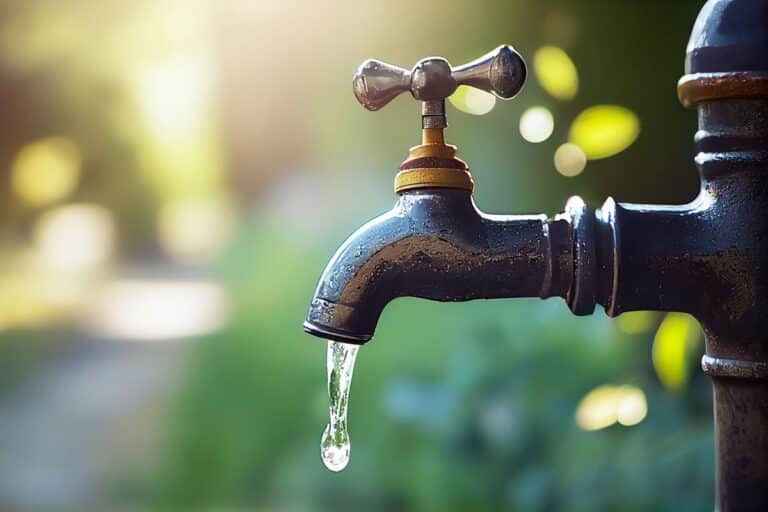how would you like an extra $500 every year? reducing your electricity bill: it’s worth it
This website may earn commissions from purchases made through links in this post.

Or imagine not having to worry about where you’re going to find that extra $500 to pay your bills.
I’ve been writing a series on saving money on electricity, but I wanted to interrupt the usual schedule to emphasise how much money you can save by making the suggested changes around the home.
‘Cause, you know, saving money on electricity can seem a little…boring.
But having an extra $500 in your pocket is totally not boring.
While I can tell you that switching off your air-con or hanging the washing is going to save you ‘lots of money’, nothing is more revealing than cold, hard data.
That’s what today’s post is about: just how much are we talking when I write save ‘more’ on your electricity bill?
how to beat the averages
The average Australian household uses 20 kilowatts of electricity each and every day.
Actually, to be more precise, this is the data on household averages from on the back of my latest electricity bill:

20 kilowatts for a family is pretty close. It’s the number I’m going to use for the following example.
20 kilowatts a day adds up to 7,300 a year. The current price of electricity (Nov 2013) is around 26 cents per kilowatt hour (our electricity cost is 26.73 cents, but I’ve seen it between 24 cents and 28 cents depending on supplier and region; I’ll use 26 cents for the example).
7,300 kilowatts at 26 cents per kilowatt equals $1,898 or $2,087 inclusive of GST. That’s around $521 (GST inclusive) per quarter.
How do you compare?
Now lets assume you make a few changes around the home, as suggested in the saving more on the electricity series, and reduce your consumption by just 1/4 or 25%.
That brings your average daily usage down to 15 kilowatt hours per day or 5,475 per year.
At 26 cents, your yearly electricity bill is now $1,565 (inc. GST; $391 per quarter) saving you $522 each and every year.
Hello $500!
You may be thinking that a 25% reduction in electricity usage is a lot.
And to be sure, switching off stand-by is not going to cut it.
But by targeting the big spenders, as well as doing the little things, a 25% reduction is very doable.
- Cutting the use of the air-conditioning by half can save you up to $200 for a split system unit or up to $372 for ducted (as per these numbers).
- Reducing your shower time from 10 minutes to 4 minutes can save you up to $130 a year per person (see here for calculation, using a standard electric storage hot water heater).
- Hanging the washing out instead of using the dryer can save you around $100 a year (assuming 5 loads per week at 30 minutes per load).
- Switching from hot water to cold when washing clothes can save you up to $50 a year. (Check out this appliance calculator for this and other comparisons).
And before we’ve even turned out the lights, our household has saved $500.
how we compare
We are a household of four: two adults and two young children. Our average daily electricity usage is 7.51 kilowatts. That’s less than the average for a single household.
Compared to using 20kWh, we save around $1,303 a year (inc. GST).
A big part of our savings has to do with the fact we have solar hot water. This emphasises why upgrading to an efficient hot water heater is a good investment.
But we also don’t have air-con, heating or a dryer. We don’t watch much TV or own many appliances. I’m writing this now on a laptop (battery powered) by low-wattage lamp light. It all adds up.
Or in this case, it doesn’t add up!
We don’t have to feel helpless as we watch the price of electricity go up. We can make changes (in many cases, easy changes) around the home to mitigate price rises.
Many of these changes don’t have a negative impact on lifestyle. It only takes 5 extra minutes, for instance, to hang washing rather than throw it in the dryer. Turning down the air-con by a couple of degrees isn’t going to make a significant difference to your comfort. And turning off lights is more about reducing waste rather than reducing usage.
But changing the way we use electricity adds up to big financial gains (not to mention the environmental benefits).
So stay tuned for the next post in the series: saving money on refrigeration and freezing.







I always find it funny when overseas bloggers talk about hanging out their washing as an extremely frugal thing to do. It’s just such a normal thing to do here. I’ve only used a dryer a handful of times in my life, but I can imagine it’s more difficult with kids.
I know what you mean, although in parts of the US, I think clothes lines are ‘illegal’ or at least against estate governance.
My mother used to wash boarding school boy’s clothes as well as our own…without a dryer… in Bathurst, where it snows occasionally. The only time I have trouble is during the wet season when the humidity is so high it’s hard to get anything dry. I imagine you have similar trouble?
I’ve found that since we have retired our power bill has gone up due to the fact we’re home most of the time. toilet paper usage has also increased lol. There are lots of factors to consider with power usage as we age too.not the least having to factor it into a limited income.